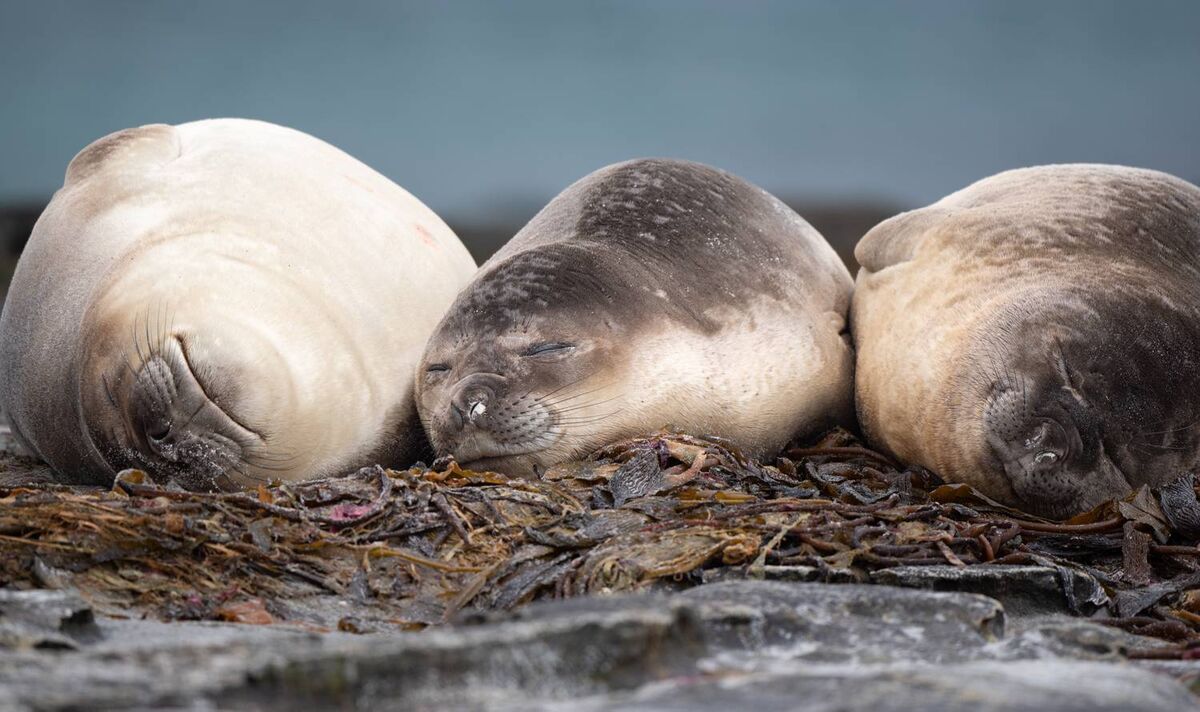TV review: Our Planet II — I don't think we'll ever tire of shows that are made this well

Our Planet II: David Attenborough returns to Netflix
(Netflix) is about animals on the move. Everything is political now, so when David Attenborough says that life on earth relies on freedom of movement for all species, it’s probably fair to assume it’s a dig at Donald Trump & co.
But the quality of animal drama is the real attraction. The star of the first episode is an albatross chick who lives on a strip of sand island in the Pacific called Laysan. This isn’t as idyllic as it sounds. First of all the island is spoiled by washed-up plastic, thanks to you-know-who. Our friend the albatross chick narrowly survives a choking episode on some plastic, which was a relief. Unfortunately, the chunk of plastic came as part of the only meal he ever got from his parents. They bring back one meal and then he has to fend for himself. And you thought upper-class British people hated their kids.
It gets worse. He has to fly for food, but he’s the largest sea-bird in the world and his first flight only takes him 20 metres out to sea, where he splashes down into water infested with Tiger Sharks who are there for the All You Can Eat Albatross Chick Night. It’s grisly watching chick after chick take a short flight out to a meal where they are on the menu. Our friend the albatross watches on as Attenborough ramps up the tension. He’s off! The wind dies down. He’s in the water! The shark has a go but this bird is a survivor and gets away with a nifty head over heels, before taking off to safety. Attenborough tells us he might not touch land again for five years.

It’s compelling and informative. And it’s the programme makers I feel sorry for. How long did it take to get the sequences I described above. Did they live on the plastic polluted strip of sand? Did they bribe the shark?
We’re no longer satisfied with a crocodile snacking on zebra. We need back story, an arc, some semblance of character from these animals, or else it’s just another predator catches desperate eejit who had to migrate for food.
delivers. The background in all the stories is how human life is putting pressure on every other species out there. So we’re involved from the get-go. Particularly with the sea lion and her calf who are struggling to find some summer sea-ice so she can dump the little one with some other sea lions and go hunting for food. It’s poignant, moving stuff and it’s gorgeous looking, particularly now that we all have better TVs.
We replaced our 10-year-old telly recently, the new screen offering us much more eye candy from a show like this. It’s great family viewing, although our nine-year-old was a bit upset that the sea lion couldn’t find a babysitter.
is a feast of wildlife telly. I don’t think we’ll ever tire of shows that are made this well. Now all we need is a way to keep David Attenborough alive forever.






